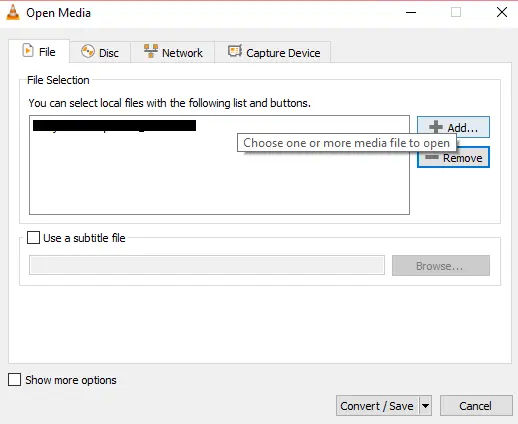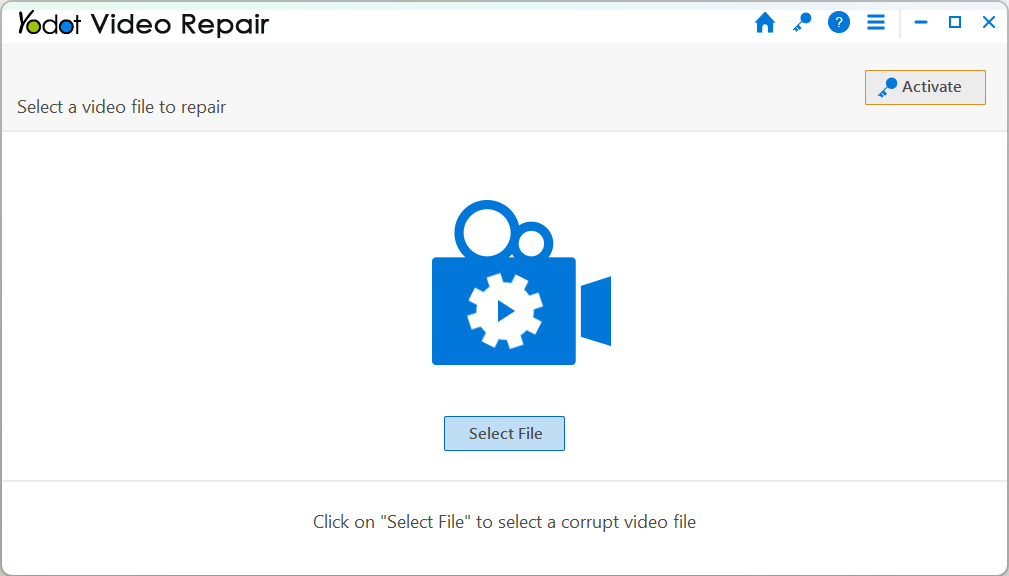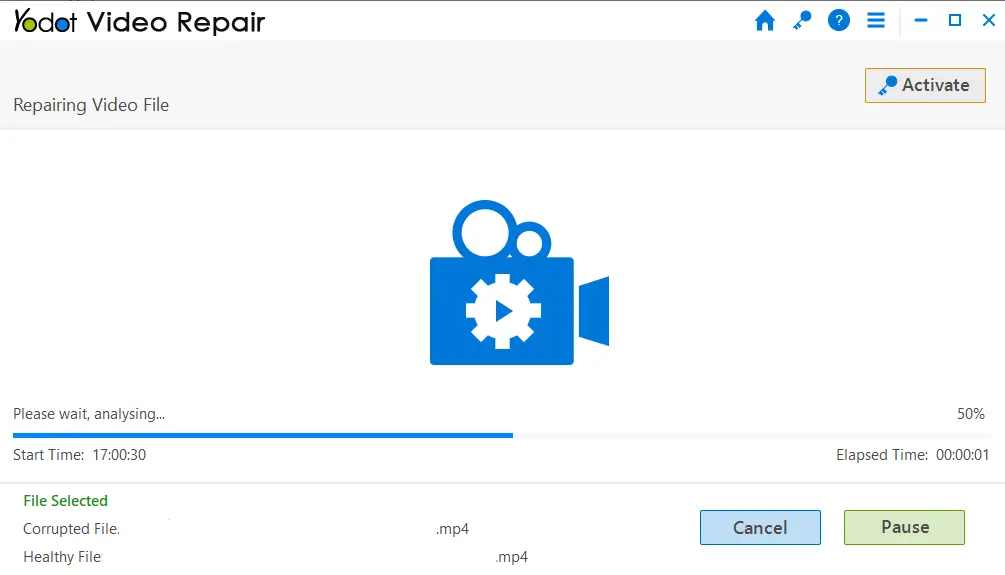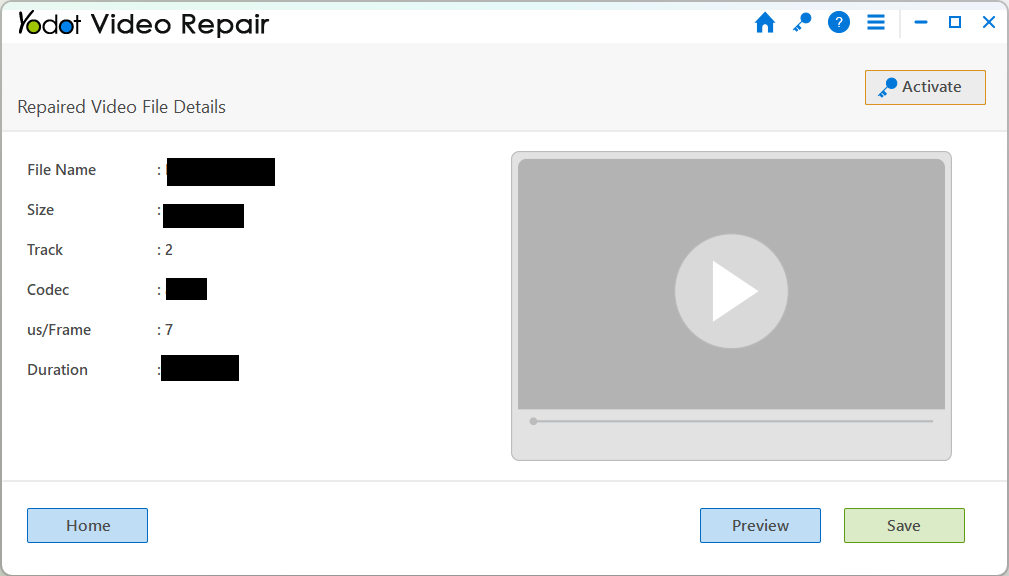When the video has an unsupported video codec, you may typically see some error messages like “a codec is required to play this file”, “Invalid File Format” or “Missing codec ’ errors while playing the video on a PC, Mac, TV, or Android device. Ever wondered what it means? We’ll tell you.
What Does Video Codec Not Supported Mean?
A video file has a codec and container. The container determines the file format, while the codec helps in encoding and decoding the video. When you see an unsupported codec error message, it means either the codec is missing, incompatible, or corrupt else the device lacks the required codec, or the media player doesn’t support the video file format.
The obvious question might be, “How do I fix the codec issue?” We’ve answered it clearly and concisely addressing all the cases in the upcoming sections. Keep reading.
6 DIY Solutions to Fix the “Cannot Play Video Codec Not Supported” Issue
Try the solutions below to fix unsupported encoding settings on your video file:
- Try a Different Media Player
- Update Your Media Player
- Check for System Updates
- Download the Missing Codec
- Convert the Video Format
- Repair the Video File
1: Try a Different Media Player
Simple and probably easiest in the lot, if your existing media player is throwing “mp4 codec not supported” or any other errors, just open the video file on a different media player that has the codec support to play your video file.
Simple and probably the easiest solution: if your existing media player is throwing a “mp4 codec not supported” or any other errors, just open the video file in a different media player that supports the codec needed to play your video file.
Default players like Windows Media Player and QuickTime have limited codec support, and will likely throw video codec errors when your video file is incompatible.
Try free and open-source media players like VLC, KMPlayer, and 5K Player that support more video formats.
2: Update Your Media Player
Updating your media player can be a worthy try to fix the “video codec not supported” issue as the new updates can improve codec support.
Here is how you can update Windows Media Player
- Open Microsoft Store.
- Click on Library in the lower-left menu.
- Click on Get Updates to install the available updates for the Windows Media player.

To Update VLC Media Player: Open VLC > Help > Check for Updates

3: Check for System Updates
System updates will include updates to system-wide codecs that can be used by programs in the device and it can also fix bugs that disturb the codec functionality which can resolve the unsupported encoding settings issue.
To Update Windows: Settings > Update & Security > Click on Check For Updates and download them (if available).

When an OS update doesn’t include display driver updates, then you will have to do it manually,
Open Device Manager > Expand Display adapters > right-click on the adapter>choose Update driver.

Once the update is finished now try playing the video. If this doesn’t resolve then try the upcoming solution
4: Download the Missing Codec
Try installing the complete codec pack like K-Lite that supports the default media players on the system. A pack would contain codecs for almost all file formats.
IMPORTANT: Downloading codecs is risky. Malicious software (malware) can disguise itself as a codec, so only download from trusted sources like the codec manufacturer’s website.
5: Convert the Video Format
When your media player doesn’t recognize the video file you will either see a black screen while playing the video or an unsupported file format error. Simply converting the video file format to any of the popular formats like MP4, AVI, and MKV will be an easy fix to solve the video codec not supported error.
Make sure you choose a universal format like MP4 to play on all major operating systems, browsers, and players
However, there is a slight trade-off in quality and it requires some processing time.
You can choose any online video converter tool like FreeConvert or CloudConvert to convert the video files but may have limitations such as file size restrictions or watermarks else you can use VLC to convert the video file, here’s how it works:
- Open VLC, click on Media, and choose the Convert/Save option.

- Click on Add to select the video to be converted.

- Click on Convert/Save
- In the Convert window, select the new video file format by expanding the drop-down next to the Profile options.
- Click on Start to convert to convert the video file.

Now try playing the video file, it should play
6: Repair the Video File
If the above solutions don’t do the trick of vanishing the “video codec not supported” issue then we think the video file is corrupted and it needs a professional video repair tool.
There are several free options like VLC to repair video files but they have limited capability, We suggest you try the Yodot Video Repair to handle videos you see “we can’t open it uses unsupported encoding settings”.
The tool is completely safe, easy to use, and supports repairing popular video formats like MOV, MP4, AVI, etc. Download now and fix the “video codec not supported” issue in your videos.
Step 1: Download the video repair tool on your computer.
Step 2: Launch the Yodot Video Repair tool and click on Select File to choose the video file.

Step 3: Click on Repair to start the video repair process.

Step 4: After completion, preview the video file to see if the unsupported codec issue is gone, and save it on your device.

Also Read: How To Fix Audio Codec Not Supported Issue?
Conclusion
Nobody wants to deal with error messages when playing a video, especially ones like “We can’t open it uses unsupported encoding settings”.
You can try the solutions listed in the article in order of your preference. However, if you notice any early symptoms of video corruption such as playback issues, desync, or pixelation, consider using professional video repair tools like Yodot Video Repair to fix those issues.